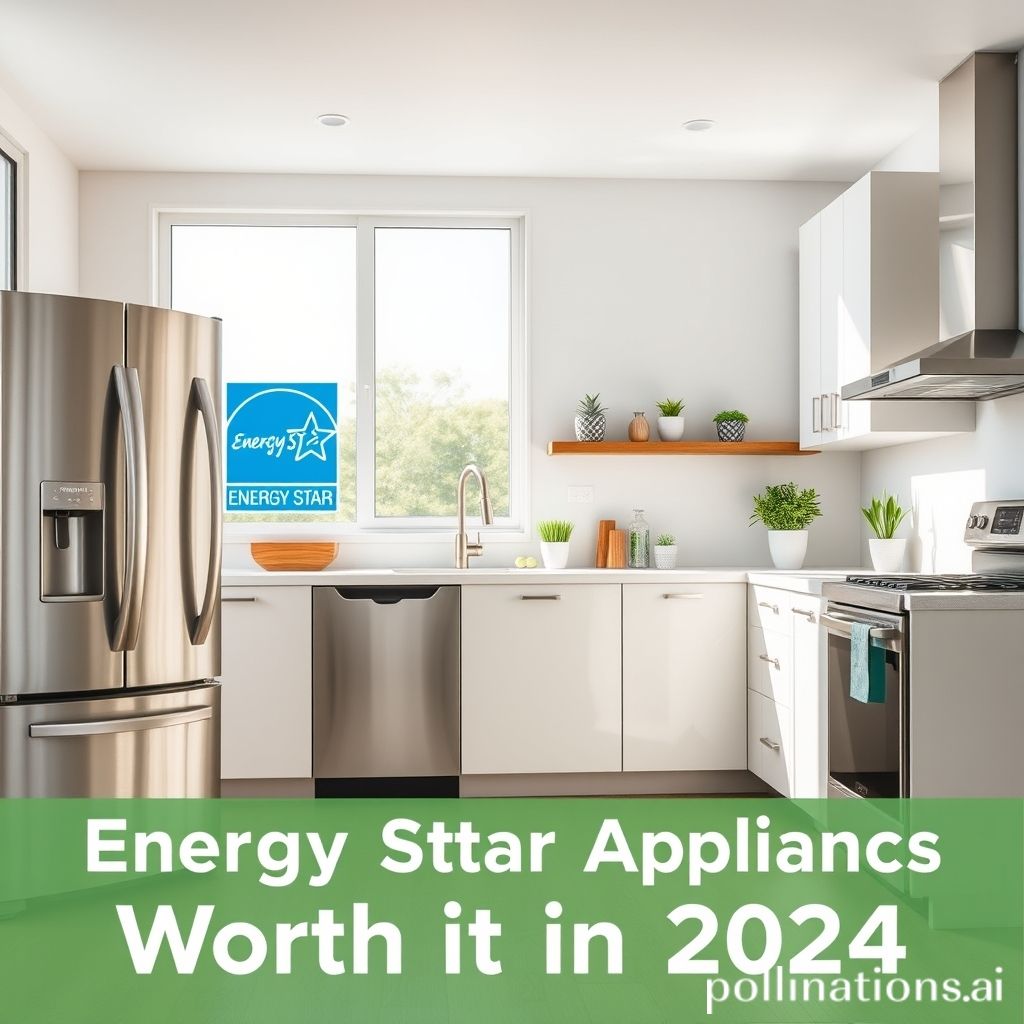Are Energy Star Certified Kitchen Appliances Really Worth the Investment? A Cost-Benefit Analysis for 2024
Upgrading your kitchen appliances is a significant decision, and with growing concerns about energy consumption and rising utility bills, choosing wisely is more important than ever. Energy Star certified appliances promise energy savings, but do these savings justify the potentially higher upfront costs? This article provides a comprehensive cost-benefit analysis for 2024, examining the potential energy savings, lifespan, and initial investment required for Energy Star appliances compared to their conventional counterparts.
Understanding Energy Star Certification and Its Benefits
The Energy Star program, managed by the U.S. Environmental Protection Agency (EPA), certifies products that meet strict energy efficiency guidelines. These appliances use less energy than standard models, reducing your carbon footprint and lowering your utility bills. The certification process is rigorous, ensuring that certified products genuinely deliver on their energy-saving promises. This isn’t just a marketing gimmick; it’s a verified standard of performance. Beyond energy savings, Energy Star appliances often incorporate innovative technologies that enhance performance and extend product lifespan. For example, refrigerators might have improved insulation and compressors, while dishwashers may feature advanced water filtration and spray arm designs. These improvements contribute to better food preservation, cleaner dishes, and reduced maintenance needs.
Here are some key benefits of Energy Star certified appliances:
- Reduced Energy Consumption: Obvious, but significant! Lower energy use translates directly into lower electricity and water bills.
- Lower Utility Bills: This is the direct financial benefit. Savings vary by appliance type and usage, but they add up over time.
- Environmental Impact: Reduced energy consumption lessens your carbon footprint, contributing to a more sustainable environment.
- Potential Rebates and Incentives: Many utility companies and government programs offer rebates and tax credits for purchasing Energy Star certified appliances, further reducing your upfront costs.
- Enhanced Performance and Features: As mentioned earlier, Energy Star appliances often come with advanced features that improve performance and convenience.
Upfront Costs vs. Long-Term Savings: A Detailed Comparison
The primary barrier to entry for many consumers is the higher initial cost of Energy Star appliances. While the price difference varies depending on the appliance type, brand, and features, Energy Star models typically command a premium of 10-25% compared to conventional appliances. However, it’s crucial to consider the long-term savings that these appliances offer. To accurately assess the cost-effectiveness, it’s necessary to estimate the annual energy consumption of both Energy Star and conventional models. The Energy Star website provides detailed information on the energy consumption of certified products, allowing you to compare models side-by-side. You can then use your local utility rates to calculate the annual cost of operation for each appliance. For example, an Energy Star certified refrigerator might use 300 kWh of electricity per year, while a conventional model could use 450 kWh. At an electricity rate of $0.15 per kWh, the Energy Star model would cost $45 per year to operate, compared to $67.50 for the conventional model – a savings of $22.50 per year.
Here’s a breakdown of factors influencing the cost-benefit analysis:
- Appliance Type: Refrigerators and freezers offer the most significant energy savings due to their continuous operation. Dishwashers and washing machines also provide substantial savings through water and energy efficiency.
- Usage Patterns: The more frequently you use an appliance, the greater the potential savings from an Energy Star certified model.
- Utility Rates: Higher electricity and water rates make Energy Star appliances even more cost-effective.
- Lifespan: The longer the appliance lasts, the more time you have to recoup the initial investment through energy savings.
Extending Lifespan and Maximizing Efficiency of Energy Star Appliances
Proper maintenance and care can significantly extend the lifespan of your Energy Star appliances and maximize their energy efficiency. Regular cleaning, timely repairs, and adherence to manufacturer’s instructions are crucial. For refrigerators, ensure proper ventilation around the unit and clean the condenser coils regularly. For dishwashers and washing machines, use the appropriate amount of detergent and avoid overloading. Descale regularly to avoid decreased performance. Periodically inspect hoses and connections to prevent leaks. Furthermore, consider implementing energy-saving habits in your kitchen. Run dishwashers and washing machines only when fully loaded. Defrost frozen foods in the refrigerator to utilize their cooling effect. Avoid pre-rinsing dishes before loading them into the dishwasher. These simple practices can further reduce your energy consumption and extend the lifespan of your appliances.
Making the Right Choice for Your Kitchen and Budget in 2024
Ultimately, the decision of whether to invest in Energy Star certified kitchen appliances depends on your individual circumstances and priorities. While the upfront costs may be higher, the long-term energy savings, potential rebates, and enhanced performance can make them a worthwhile investment. By carefully comparing models, considering your usage patterns, and factoring in utility rates, you can determine whether Energy Star appliances are the right choice for your kitchen and budget. Remember to research available rebates and incentives to further reduce your initial investment and accelerate your return on investment.
In conclusion, deciding if Energy Star appliances are worth it in 2024 depends on balancing initial costs with long-term gains. Factors like lower energy bills, environmental benefits, and potential rebates play a key role. Careful consideration of appliance type, usage habits, and local utility rates is essential. With thorough analysis, you can make an informed decision that aligns with both your financial goals and commitment to sustainability, leading to a more efficient and eco-friendly kitchen.



